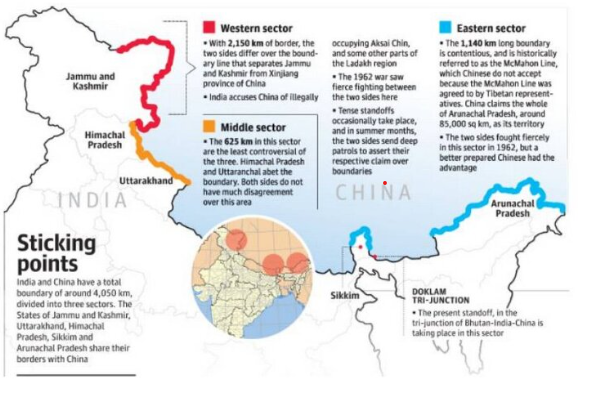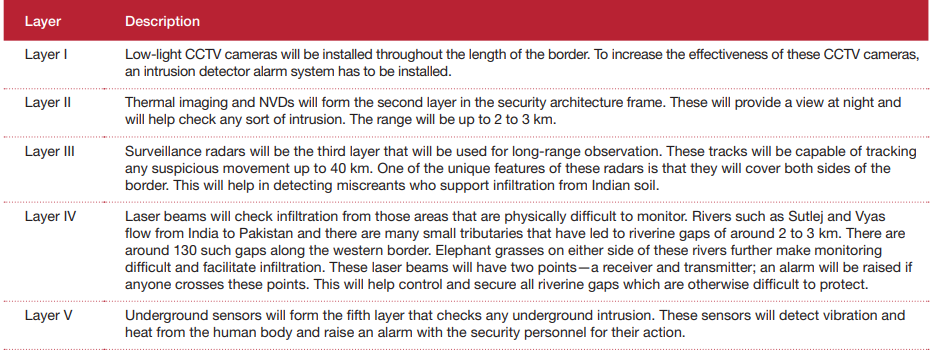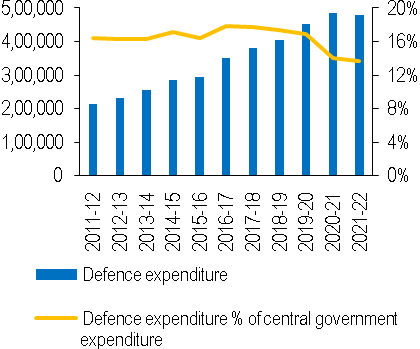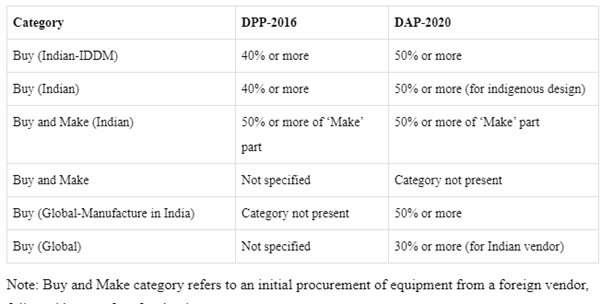

In the recent times we are witnessing border skirmish along the North Eastern and North Western parts of border where India responded swiftly to avert the huge threat, however the ministerial level talks going on with china and cease fire agreement with Pakistan still active but yielded no desired results but the threats changing its masks and posing a great challenge to India at all the times. Despite the challenges at borders, India making great leaps in defence sector where in recent times MoD (Ministry Of Defence) had set 64% of capital acquisition budget for domestic industry in FY 2021-2022 and has able to “Over Achieve” the target and on other hand Under the Make in India initiative, the Indian government focuses on minimising import dependence, increasing domestic capacity and modernising armed forces. It plans to achieve these by scaling up domestic manufacturing capacity by promoting local Micro Small and Medium Enterprises (MSMEs) and bigger defence manufacturers and by inviting foreign manufacturers to start operations in India. Moreover, the government has announced various reforms on aerospace and defence manufacturing policy to provide a fillip to defence equipment manufacturers in India.
India has the third-largest international border in the world. It also serves as the most sensitive border of the world. It varies from the extreme climatic conditions to infiltration.9 countries in total share the international borders with India out of which 7 countries share land borders whereas 2 countries share sea borders.
The length of the land border is 15,106.7 km and the coastline border is 7,516.6 km
1. Afghanistan
The Indian state which shares its border with this country is Ladakh (PoK). The border length is 106 km.
2. Bangladesh
There are many states which share its border with this country. The states are – West Bengal, Tripura, Meghalaya, Mizoram, and Assam. The border length is 4096.7 km
3. Bhutan
The states which share the border with this country are – West Bengal, Arunachal Pradesh, Sikkim, and Assam. The border length is 699 km.
4. China
The regions which share the border with this country are – Ladakh, Himachal Pradesh, Uttarakhand, Arunachal Pradesh, and Sikkim. The border length is 3488 km. The Line of Actual Control (LAC) is the borderline shared by India and China.
5. Myanmar
The regions which share the Myanmar border are – Arunachal Pradesh, Manipur, Mizoram, and Nagaland The border length is – 1643 km.
6. Nepal
The regions which share the Nepal-India border are – West Bengal, Sikkim, Bihar, Uttarakhand, and Uttar Pradesh. The border length is 1751 km.
7. Pakistan
The regions which share the Indo-Pak border are – Jammu and Kashmir, Punjab, Haryana, Rajasthan Gujarat, and Ladakh. The border length is 3323 km. The Line of Control (LoC) is shared between Pakistan and India.
8. Sri Lanka
The country shares a sea-line border with India. It is separated by the Gulf of Mannar.
9. Maldives
This country also shares a sea-line border with India. It lies in the South-West part of the Indian Ocean below the Lakshadweep Island
India’s neighbourhood which the member-countries of the South Asian Association for Regional Cooperation (SAARC) namely Afghanistan, Bangladesh, Bhutan, Nepal, Maldives, Pakistan and Sri Lanka comprise is a fairly complex geographical entity. This is to say the least. In fact India can be said to be living in a dangerous neighbourhood. The issues with neighbouring countries are summed up as:
- Pakistan
Kashmir and militancy
- The withdrawal of Kashmir’s special status has triggered a new phase of militancy through the emergence of home grown militant outfits and local recruitments. Meanwhile, the number of foreigners affiliated to militant outfits in the region has decreased — from 77% in 2016, to 60% in 2017, 45% in 2018, 19% in 2019, and 15% in 2020.
- The targeted killings of civilians in October 2021 have given way to the use of a new term, “hybrid militancy.” A hybrid militant is an unlisted member of a militant group who receives training in small weapons with the objective of carrying out targeted killings
Sir creek issues at western part of Gujarat
- Sir Creek is a 96-km strip of water disputed between India and Pakistan in the Rann of Kutch marshlands. The Creek opens up in the Arabian Sea and roughly divides the Kutch region of Gujarat from the Sindh Province of Pakistan.
- The dispute lies in the interpretation of the maritime boundary line between Kutch and Sindh.
Saltoro ridge in Himalayas
- The Saltoro Mountains mountain range is a sub range of the Karakoram Heights or of Saltoro Ridge. They are located in the heart of the Karakoram, on the southwest side of the Siachen Glacier.
- They are claimed as part of Jammu and Kashmir Union Territory by India and as part of Gilgit-Balochistan by Pakistan.
- In 1984, India assumed military control of the main peaks and passes of the range, with Pakistani forces into the glacial valleys just to the west.
- China
- Territorial dispute over Aksai Chin on Western sector with sino-India border
- In middle sector, the border length is about 625 km but have no issues at this sector. And On Eastern sector, India shares a 1,140 km long boundary with China. runs from the eastern limit of Bhutan to a point near the Talu Pass at the tri junction of Tibet, India and Myanmar. The boundary line is called as McMahon Line.

- Nepal
- Kalapani: The Kalapani region derives its name from the river Kali. Nepal’s claims to the region is based on this river as it became the marker of the boundary of the kingdom of Nepal following the Treaty of Sugaulisigned between the Gurkha rulers of Kathmandu and the East India Company after the Gurkha War/Anglo-Nepal War (1814-16). The treaty was ratified in 1816.
- The dispute is mainly because of the varying interpretation of the origin of the river and its various tributaries that slice through the mountains. While Nepal’s claim of the territory east of Kali is based on the Limpiyadhura origin, India says the river actually takes the name Kali near Kalapani.
- Susta: The Susta territorial dispute has arisen as a result of the shifting of the course of the Gandak river. The Treaty of Sagauli defined Gandak as the international boundary between India and Nepal. When the treaty was signed, Susta was on the right bank of the river Gandak which falls in Nepal territorial control. But, in due course of time, the river has changed its course and Susta now falls on the left bank of the Gandak, which is controlled by India.
- Insurgents and terrorists pour into India from Nepal border as it is open. All terrorist organizations, be it from Punjab, Kashmir, northeast or those of Maoists have fully exploited open borders with Nepal. It has been reported that many terrorists have sneaked into India through the porous and poorly guarded Indo-Nepal border. Apart from insurgents and terrorists, many hard-core criminals pursued by Indian and Nepalese security forces escape across the open border.
- Illegal activities such as: Smuggling, fake currency, drug and human trafficking.
- Srilanka
- Kachchatheevu island in palk strait; is a 163-acre uninhabited island administered by Sri Lanka and was a disputed territory claimed by India until 1976.The island is located between Neduntheevu, Sri Lanka and Rameswaram, and has been traditionally used by both Sri Lankan Tamil and Indian fishermen to dry their nets and Tamil fishermen believe that Kachchatheevu is traditionally their territory and so they have a right to fish there. The Sri Lankan authorities believe that this endangers the livelihood of Sri Lankan fishermen.
- Myanmar
- There is no border dispute between India and Myanmar. However, certain sectors of the India-Myanmar boundary remain to be demarcated. But, Insurgents make use of the poorly guarded border and flee across when pursued by Indian security forces. Close ethnic ties among the tribes such as Nagas, Kukis, Chin, etc., who live astride the border help these insurgents in finding safe haven in Myanmar. These cross-border ethnic ties have facilitated in creation of safe havens for various northeast insurgent groups in Myanmar.
- The location of the boundary at the edge of the “Drugs golden triangle” facilitates the unrestricted illegal flows of drugs into Indian Territory. Heroin is the main item of drug trafficking.
- Bangladesh
- Illegal migration, According to ‘Task Force on Border management, 2001’, there are about 15 million Bangladeshi illegal immigrants in India, increasing at rate of 3 lakh per month. Recent eruption of communal violence in Assam has direct link with this immigration.
- Cattle smuggling, Cattle from as far as Haryana, UP, Bihar is taken to borders for grazing and then smuggled to Bangladesh. Bangladesh also imposes custom duty on these imports. Cattle confiscated on border alone are around one lakh annually. This way government is losing revenue of around 10000 crore annually.
- Bases of Anti India elements such as the United Liberation Front of Assam (ULFA), the All Tripura Tiger Force (ATTF), the National Liberation Front of Tripura (NLFT), and the National Democratic Front of Bodoland (NDFB) as well as several other insurgent outfits from the Northeast have bases in the Chittagong, Khagrachari, and Sylhet districts of Bangladesh
- Bhutan
- Border was demarcated except at Tri-junction with china, Doklam is also known as Donglong area of the Sikkim sector. China was constructing motorable road from Dokola towards Bhutan army camp. It affects the boundary between the two countries. Bhutan asked Beijing to restore status quo by stopping the work. Donglong is a tri-junction area near the Chumbi Valley. It is under China’s control; however, Bhutan claims sovereignty over the area.
- Chinese made goods, Bhutanese cannabis, liquor and forest products are major items smuggled into India. Livestock, grocery items and fruits are smuggled out of India to Bhutan.
- With respect to Bangladesh
- Establishing Border out post although BSF manning 802 posts but to reduce the distance between to 3.5 km govt approved additional BOP’s on this border.
- Fencing and floodlighting; of 3326 km only 501 km left with no fencing and where it is with full of water bodies, so BSF is planning to put “Floating fence”.
- Integrated check posts which include; security, immigration, customs, human and animal quarantine and equipped with all modern amenities.
- At India Pakistan border:
- The firs border is “Radcliff line (2308KM)” stretches from Gujarat to parts of Jammu and Kashmir.
- The 2nd border is “Line of Control (LoC), runs 776 km along Rajouri, poonch, baramula, kupwara and kargil till parts of Leh.
- The 3rd border is Actual ground position line (AGPL) runs for 110 km from NJ9842 to Indira col in north of siachin glacier.
- The double row fencing with flood lights and 700 Border Out Post, One Integrated Check Post at Attari.
- BSF implementing “Smart fence” mechanism where, Laser walls and Heat sensors will be installed on boundary.
- At china border
- Joint working Group’s Agreement on maintenance of peace and tranquillity along LAC was signed in 1993.
- In 1996, Agreement on Confidence building Measures (CBM) along LAC was signed.
- India Nepal Border
- India shares an open border since 1950 and found on principles-“Treaty of peace and friendship”.
- India granted Nepal 15 transit and 22 trading points along border to deal with the concerns.
BADP (Border Area Development Programe) is being implemented by MHA through state governments and Group of ministers recommended principle of “One Border One Force” which made govt to setup Paramilitary forces; SSB, BSF, ITBP which have specialized area responsibility.
- Smart border management which is including People, process and Technology.
- Technology interventions near the border areas in India are broadly classified into 2 categories:
- Mobilisation and ordinance supply chain (including equipment, weapons, and vehicles) these investments ensure that we have the right triggers for mobilisation and activating the ordinance supply chain, so that our state of readiness is synergised with an emerging situation on the borders.
- Surveillance and communication (including the use of technology that comprises information, logistics, reconnaissance, command and control centres, and surveillance in the border areas)
- DRDO’s Air Defence Control and Reporting System (ADC&RS) and Battlefield management system.
- Centre for Artificial Intelligence and Robotics (CAIR) of DRDO is helping to improve communication network in inhospitable terrain and mountainous topography.
- Radio Trunk system (RTS) and Radio Local System (RLS) have significantly improved military communication in border areas.
- Long range reconnaissance and observation systems deployed in strategic location s which proven for infiltration useful in detection and identification of infiltrators.
- Indian military has long operated Israeli Searcher and Heron drones for C4ISTAR roles and possesses anti radiation suicide drones.
- The UAVs were used to monitor the border areas and carry out strikes in case of emergency.
- Indian govt took step towards locking border using advanced technology systems with layered defence approach to fulfil D4R2 (Deter, Detect, Discriminate, delay, response, recover)

The role of technology is crucial as it eases the job for security forces along border areas in countering various issues mentioned above and at same time if the technology provided is indigenous it will create employment opportunity and helps in achieving self reliance in the defence and allied sectors.
- In 2021-22, the Ministry of Defence has been allocated Rs 4,78,196 crore. This includes expenditure on salaries of armed forces and civilians, pensions, modernisation of armed forces, production establishments, maintenance, and research and development organisations.
- The allocation to the Ministry of Defence is the highest (14%) among all ministries of the central government.
- In the last decade (2011-12 to 2021-22), the budget of the Ministry of Defence has grown at an annual average rate of 8.4%, while total government expenditure has grown at 10.3%.

- According to the Stockholm International Peace Research Institute (SIPRI), India was the third-largest defence spender in absolute terms in 2019 (after USA and China). USA spent more than India on defence, both in absolute terms, and as a percentage of GDP. China spent lower in terms of percentage of GDP, but its absolute expenditure on defence was 3.7 times that of India.
- According to the Stockholm International Peace Research Institute, between 2015-19, India was the second largest importer of major arms, after Saudi Arabia, accounting for 9% of global imports.

In August 2020, the Ministry of Defence published a list of 101 items for which there will be an embargo (ban) on import. The list includes weapon systems, such as artillery guns, and anti-submarine rocket launchers, and equipment such as high power radar and upgrade systems. The ban on each item will apply as per the deadline specified.
For 67 items, the ban came into effect from December 2020. The Ministry expects the ban on imports to give a push to self-reliance in the defence sector by boosting the domestic industry. It estimates that the embargo will result in domestic contracts of nearly four lakh crore rupees within the next five to seven years. Between April 2015 and August 2020, Rs 3.5 lakh crore worth of these items was procured.
- Defence Acquisition Procedure, 2020
The Defence Acquisition Procedure (DAP) governs the acquisition of weapons and equipment for India’s defence forces. The DPP 2016 specified two modes of capital acquisition: (i) buy, and (ii) buy and make. The DAP has introduced ‘leasing’ as a new mode of acquisition. Leasing substitutes initial capital outlays with periodical rental payments. It is preferred in situations where: (i) procurement is not feasible due to time constraint, or (ii) the asset is required only for a specific time. ‘Make’ refers to manufacturing portion of the contract.
- Increase in FDI limit
In September 2020, the limit for foreign direct investment under the automatic route was increased from 49% to 74%. FDI beyond 74% is permitted with government approval which may be given where FDI is likely to result in access to modern technology. Domestic companies can benefit from enhanced access to capital and state of the art technology. This change was announced as part of the Aatma Nirbhar Bharat Abhiyaan.
- Increase in indigenous content
Categories of acquisition provided in DAP are:
- Buy (Indian-IDDM) refers to the procurement of products from an Indian vendor that have been indigenously designed, developed and manufactured;
- Buy (Indian) refers to the procurement of products from an Indian vendor;
- Buy and Make (Indian) refers to an initial procurement of equipment from an Indian vendor in a tie-up with a foreign vendor, followed by indigenous production involving transfer of technology;
- Buy (Global-Manufacture in India) refers to a purchase from a foreign vendor where the 50% IC value can be achieved in ‘Make’ through an Indian subsidiary of the vendor; and
- Buy (Global) refers to outright purchase of equipment from foreign or Indian vendors.

Challenges in the modern world for a developing country is quite indispensable and for a country like India where its neighbours pose continuous challenges in many possible ways it is essential to equip with fully built defence system to check the challenges, But the excessive dependency on foreign states for arms procurement is a major drawback as it is not a fair game in such times of challenges. So encouraging indigenous arms and technologies can add up more security to the nation and also promotes economic growth and sustainability. Judicious use of technology, men power and building capacity will enhance stability in defence sector to tackle challenges at any time.
Related Articles

